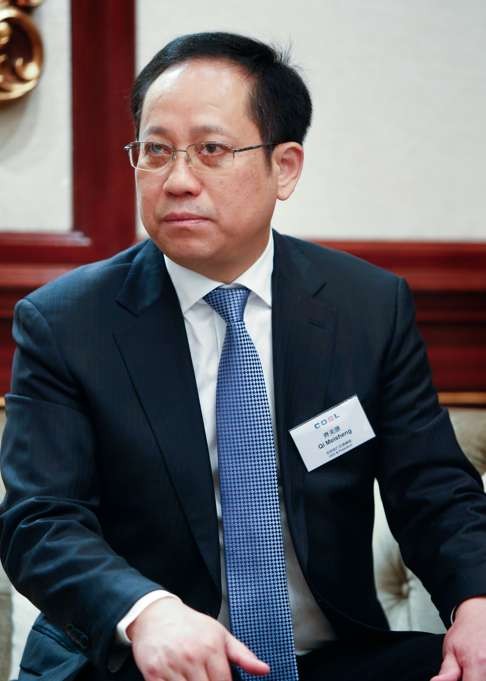
China Oilfield Services (Cosl) eyes greater overseas exposure amid recovery
‘We have six major overseas business target regions: the Russian Far East, Southeast Asia, the Middle East, Africa, Europe and the Americas,” says CEO and president Qi Meisheng
China Oilfield Services (Cosl), the country’s dominant offshore oil and gas drilling services provider, plans a substantial increase its revenue contribution from overseas projects in coming years, as it gradually recovers from the worst industry downturn since going public in 2002.
The Beijing-based firm, a sister firm of state-backed offshore oil and gas producer CNOOC, hopes to generate half its revenue from projects outside China by 2020, compared to between 30 and 40 per cent in 2017 and 33 per cent in 2015, chief executive and president Qi Meisheng told a press briefing on Monday.
“We will actively pursue opportunities to secure more overseas projects from CNOOC,” Qi said. “We have six major overseas business target regions: the Russian Far East, Southeast Asia, the Middle East, Africa, Europe and the Americas.”
Cosl’s shares edged up 0.9 per cent to HK$7.57 today
CNOOC’s chairman Yang Hua also said last week a higher portion of its investment will be deployed overseas in the coming years, thanks to the development of three “very promising, world class” projects in Nigeria and the Gulf of Mexico. Some 48 per cent of its spending is planned to be deployed overseas this year.

CNOOC last week said it plans to spend 60 billion to 70 billion yuan on its projects in 2017, up from around 50 billion yuan in 2016.
The company has accounted for around 60 per cent of Cosl’s revenue in previous years, said Cosl chief financial officer Li Feilong.
Last Thursday in a filing to the Hong Kong’s Stock Exchange, Cosl said it expects its overall work volumes and the prices of some of its services rose “with varying degrees” in 2017.
Qi said while it is difficult to predict which business segments will see a recovery in prices, globally, there is substantial excess supply in its drilling and geological data collection and analysis services, while demand and supply for well output enhancement and preparation work were in rough balance.
To help turn around an expected 11.7 billion yuan record net loss in 2016, Cosl chairman Lv Bo said the company will further cut costs after achieving 3 billion yuan of cost savings in 2016.
He would not give a cost saving target for 2017, but said besides “strict cost control measures,” management and technological innovation will also be pursued to cut costs.
Cosl will be a direct beneficiary of a 20-40 per cent capital expenditure growth in facilities off China, higher than the 9 per cent increase in global capital expenditure
Cosl’s net profit enjoyed a steady trajectory from around 209 million in 2002 to 7.5 billion yuan 2014, before plunging to 1.07 billion yuan in 2015 and slipping into a loss last year, as a result of falling global oil prices.
Sanford Bernstein senior analyst Neil Beveridge said it was cheered to hear that Cosl was aiming for positive profit in 2017.
“Cosl will be a direct beneficiary of a 20-40 per cent capital expenditure growth in facilities off China, higher than the 9 per cent increase in global capital expenditure,” he wrote in a note, adding he expected the firm to turn in a net profit of 120 million net profit this year.
Qi said Cosl is also aiming to boost revenue contribution from technical services in 2020 from around 30 per cent in 2016. The rest is from equipment leasing.
Although it is difficult to say whether profit margins will be improved by the strategy, he said it will help lower the volatility of profits because the equipment leasing business is a lot more cyclical than technical services.
Beveridge expects average utilisation of Cosl’s drilling rigs to exceed 70 per cent this year, from 50 to 60 per cent last year. 33 out of its 44 rigs have been deployed, although three are only contracted for less than half of the year.
He expected Cosl to be able to generate free cash flow – operating cash flow minus capital expenditure — of 1.5 billion yuan, which can be used for debt reduction or dividend payment.

